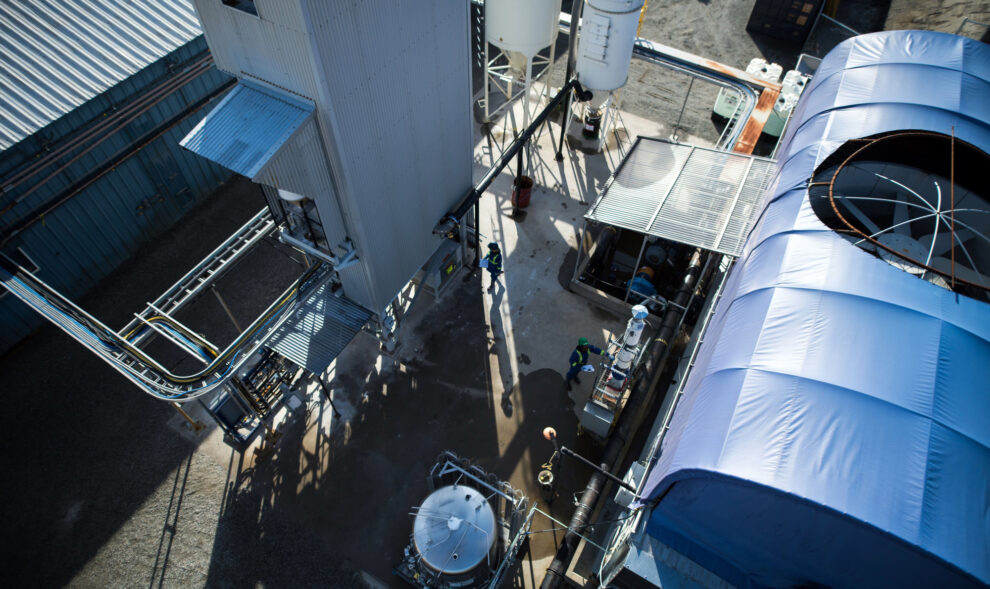The United States’ first commercial facility to directly pull carbon dioxide from the air has been opened in California this week, amid high hopes that the technology could be scaled up and help tackle global warming.
The facility, built by California-based company Heirloom Carbon Technologies in Central Valley, uses a technology called direct air capture to capture and permanently store carbon dioxide.
Carbon dioxide persists for hundreds to thousands of years in the atmosphere, and continuing emissions of carbon dioxide have greatly contributed to climate change.
The Intergovernmental Panel on Climate Change said that to achieve the goal of limiting future temperature increases to 1.5 degrees Celsius, the world must do more than just reduce emissions but also deploy technologies to remove carbon from the atmosphere.
Carbon capture and storage is considered an important way of reducing carbon emissions, which could be key to helping tackle global warming.
Heirloom said it uses limestone, a cheap and abundant resource that absorbs carbon dioxide as it forms, to remove the gas by accelerating the natural process from years to just days.
It starts by heating crushed limestone in an electric-powered kiln, transforming it into a calcium-based paste that is spread onto stacked trays where it acts like carbon-absorbing sponges.
Once saturated with carbon dioxide, the material returns to the kiln, where the carbon is extracted.
Heirloom said it has partnered with CarbonCure, a green concrete maker, to inject the captured carbon dioxide into concrete.
The company is expected to capture 1,000 tons of carbon dioxide from the air each year, with a more ambitious goal of removing 1 billion tons by 2035.
Heirloom’s main customers are corporations that want to reduce their carbon footprint and achieve net-zero emissions, including Microsoft, Stripe and Shopify. They can pay Heirloom a monthly fee to offset a certain amount of emissions that they produce.
The new facility puts California at the forefront of the emerging carbon removal industry. At the facility’s opening event on Thursday in Tracy, California, officials from the state placed high hopes on the project, saying it would help achieve the state’s ambitious climate goals and also create good-paying jobs.
California Governor Gavin Newsom applauded the Heirloom facility, saying in a statement that it represents “big and innovative ideas” by using “renewable energy to directly remove pollution from our air.”
There is a growing interest in carbon capture as an easy way to fight climate change. The U.S. government has pledged to support carbon capture technologies with funding and tax credits.
Heirloom is one of a handful of companies that the federal government recently selected to build new direct-air-capture hubs. Other companies, such as Carbon Engineering, Climeworks, and Global Thermostat, are also developing and operating direct-air-capture plants around the world.
The carbon market could reach 1 trillion U.S. dollars by 2037, if rules prioritize high-quality removals, according to an analysis by the BloombergNEF, a strategic information provider covering global commodity markets and the disruptive technologies driving the transition to a low-carbon economy, early this year.
At the same time, direct-air-capture technology faces many challenges, such as high costs, low capacity, safety concerns and regulatory hurdles.
Some criticize the technology as a distraction from the need to reduce emissions from fossil fuels and other sources.
Critics also argue that the growing excitement around these technologies could feed unrealistic expectations about how much carbon dioxide can be removed and how much nations and corporations can carry on emitting over the coming decades.










